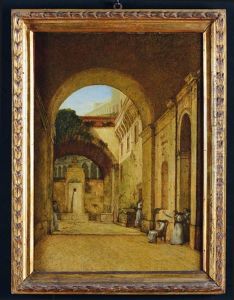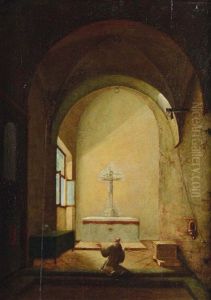Vincenzo Chialli Paintings
Vincenzo Chialli was an Italian painter, born in 1787 in Perugia, Italy. He was a prominent figure in the Neoclassical movement, a trend that sought to revive the styles and themes of classical antiquity. Chialli's career unfolded during a time of great artistic and political upheaval in Europe, with the Napoleonic Wars and the subsequent restoration of monarchies influencing the cultural landscape. Despite these tumultuous conditions, Chialli managed to carve out a significant place for himself in the art world of the early 19th century. Chialli received his early training in Perugia before moving to Rome, where he was exposed to the works of the great masters of the Renaissance and the burgeoning Neoclassical style. Inspired by the ideals of harmony, simplicity, and proportion advocated by Neoclassicism, Chialli dedicated himself to the meticulous study of ancient art and archaeology. His paintings often depicted scenes from classical mythology and history, characterized by their clarity, precision, and serene beauty. Throughout his career, Chialli contributed to various important projects and commissions. He was involved in the decoration of several prominent buildings and was known for his skill in fresco painting, a technique that allowed him to fully express his talent for creating grand, cohesive compositions. Despite his success, Chialli remained deeply connected to his native Perugia, contributing to the artistic and cultural life of the city until his death in 1840. Vincenzo Chialli's legacy is that of a skilled painter who bridged the gap between the grandeur of the Renaissance and the emerging Neoclassical style. His work reflects a deep engagement with the classical past, yet it also possesses a timeless quality that continues to resonate with audiences today. Although not as widely recognized as some of his contemporaries, Chialli's contributions to Italian art during a period of significant transition and his dedication to the principles of Neoclassicism have ensured his place in the annals of art history.


